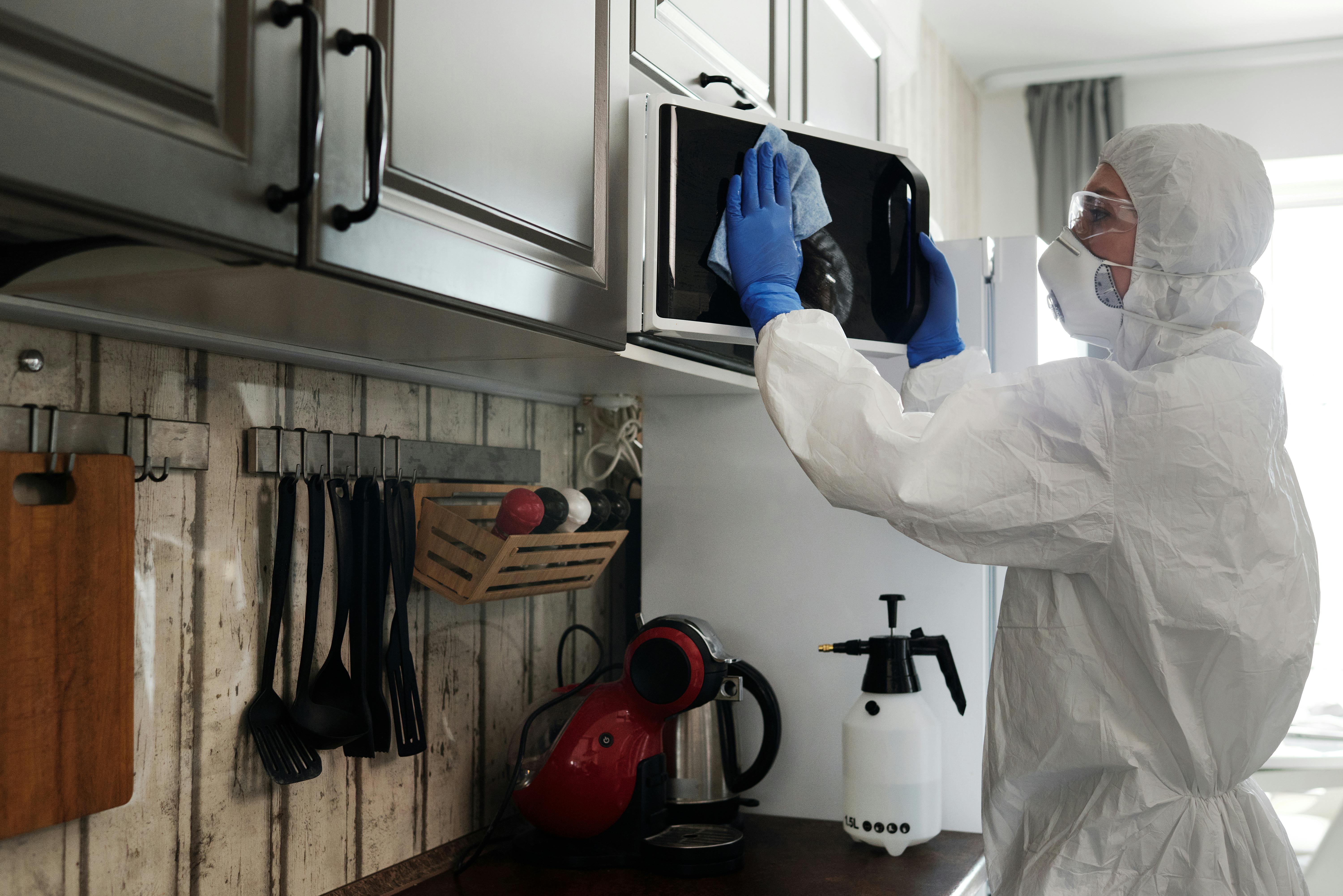Saint Vincent Kitchen Appliance Safety: Essential Tech Basics for Every Home
Ever plugged in a toaster and watched sparks fly—or worse, wiped up a pool of condensation under your fridge then wondered what could be wrong? I have. Actually (let me clarify!), that second one happened my first month renting in Saint Vincent. The moment I pulled the fridge away, the power went out. Learned the hard way, I can tell you: keeping your kitchen running safely in Saint Vincent and the Grenadines is not as “plug-and-play” as many travelers expect.
While modern appliances make daily life more convenient—and arguably tastier—it’s easy to overlook the basic technical requirements that keep them running safely, especially if you’re used to North American or European standards. As of 2025, SVG’s electrical infrastructure remains a blend of modern and legacy systems, with unique quirks: regional outages, inconsistent voltage, wildly humid climate, and a patchwork of old and new wiring1.
Key Insight
Appliance safety isn’t about perfection or paranoia. Think of it as kitchen self-defense: a structural habit as essential as washing hands or checking expiration dates.
What really strikes me after years bouncing between local homes and the occasional visitor rental? Appliance safety here is everyone’s issue—whether you’re a local, expat, digital nomad, or just renting for Carnival season. There’s a huge knowledge gap on what basics matter most: voltage, grounding, humidity’s impact, even how local water affects devices with heating elements. Let’s fill it—genuinely, conversationally, starting with the essentials.
SVG Appliance Basics: Why Local Knowledge Matters
Here’s a quick admission: I used to think appliance safety was just about “don’t use wet hands” or maybe “buy a surge protector.” Nope. What makes Saint Vincent and the Grenadines truly different (compared to, say, big-city US or Continental Europe) is how the local grid, supplies, and even customs rules create a unique environment. Appliances here die young for three main reasons: incorrect voltage, relentless humidity, and—no joke—lizards in the wiring.
Saint Vincent and the Grenadines uses a 230V/50Hz grid paired with British-style Type G sockets, though you’ll occasionally find older US-style sockets in legacy buildings. That’s nearly double the voltage of US appliances.2
The consequence? Devices brought from back home (North America, Japan, older US cruise ship fleets, etc.) simply aren’t designed for the voltage or frequency here. That fancy imported coffee machine? At best, it trips and resets. At worst: loud pop, acrid smoke, instant trip to the hardware store. What’s more, household current can fluctuate dramatically—especially during seasonal storms or peak evening hours when the grid is stressed3.
Pro Tip
Always check the voltage rating plate (usually on the bottom or back of every kitchen appliance) before plugging in. If it says 110V–120V only, and you’re in SVG—stop! You’ll need a step-down transformer, not just a cheap plug adapter.
Power Supply, Voltage, and Outlets: What Most Guides Don’t Tell You
Ever hear that “you can just use an adapter”? This is the biggest rookie mistake I see newbies and even seasoned travelers make. I’ve been guilty of this myself—back in 2016, brought a Rice Cooker from Miami, threw it on an adapter, and… bye-bye nonstick coating. My practical takeaway, both from years of error and professional training: in SVG, adapters simply change plug shape, nothing else. They do not convert voltage.
Let’s break it down quickly—because your mixer (or hair dryer) depends on this:
- SVG Standard: 230V/50Hz (Type G plug)
- US/Canada/Japan: 110V or 120V/60Hz (Type A/B plug)
- European Union/UK: 220–240V/50Hz (Type C/E/F/G plug)
- Important: Frequency differences (50Hz vs. 60Hz) can affect motors, timers, and heating cycles.
Appliances designed for “dual voltage” (e.g., 110-240V) are—but let me be clear, not all are! The ones that aren’t will fail without a heavy-duty transformer. Why do so many guides gloss over frequency? Because 50Hz vs. 60Hz matters—motors run slower, clocks drift, and heating elements may behave differently, costing you both performance and lifespan4.
Common Kitchen Risks & Real Mistakes: Stories the Manuals Don’t Share
Here’s what I’ve learned the hard way, plus a few gems from local electricians and neighbors: appliances don’t just “break” in Saint Vincent—they fail spectacularly, sometimes even with a bang. Not long ago, a neighbor told me her imported ice maker “exploded” on Carnival week. Here’s why these mishaps happen (and how to avoid them):
- Voltage Mismatch: US or Asian appliance can be ruined in seconds on SVG’s 230V if you skip the transformer.
- Humidity Damage: Condensation corrodes circuit boards, especially in unventilated kitchens5.
- Improper Repair: Third-party “fixes” (especially quick solder jobs or mismatched parts) are rampant. They often bypass built-in safety features and can create fire risks.
- Lizard Intrusion: Not a joke—tiny lizards love the warmth inside devices. They short-circuit power supplies and vanish inside appliances (more common than you’d think, especially rainy season).
Real-World Data
According to the SVG Ministry of National Security, household electrical faults accounted for 24% of residential fire incidents between 2018 and 2024, with kitchen appliances identified as a leading origin point.6
Have I ever shorted out a blender? Yes, twice (I’ll own it). The first time, it was a US model with a dinky plug adapter; the second, a vintage Caribbean hand mixer with ancient wiring. Frankly, I now spend twice as long checking wires and plugs as I do preparing jerk marinade.
Adapters vs. Transformers: Don’t Blow Your Blender
Let me get ahead of another common query: What’s the difference between a travel adapter and a transformer? If you remember nothing else, remember this:
- Adapter = Plug shape only. Does NOT change voltage. Great for “dual voltage” devices (laptop chargers, some shavers).
- Transformer = Voltage conversion. Renders a 230V socket safe for a 110V appliance. Critical for kitchen gear from North America or Japan.
| Device Type | SVG Compatible? | Needs Adapter? | Needs Transformer? |
|---|---|---|---|
| Toaster (US Model) | No | Yes | Yes |
| Rice Cooker (Dual Voltage) | Yes | Yes | No |
| Kettle (UK Model) | Yes | Usually not | No |
| Coffee Grinder (US Model) | No | Yes | Yes |
Interestingly enough, I once assumed my new electric kettle would be fine because “it’s just heating water”—wrong! The wiring was designed for 120V, and after just weeks of daily use on 230V (with only an adapter, no transformer), the heating element fried and warped the plastic base. Let that sink in for a moment: visible damage, not just an invisible short circuit.
Managing Humidity, Climate, and Appliance Lifespan: Real Caribbean Obstacles
Now, let’s talk about something nearly all new arrivals underestimate: humidity. SVG’s beautiful, moist climate is both a blessing and a constant technical challenge. It isn’t just about what’s outside—your kitchen can quickly become a condensation zone, especially when prepping cold ingredients or running multiple heat-generating appliances. And—surprise—humidity and salt in the air speed up corrosion on anything with metal contacts or circuit boards.7
- Avoid: Storing appliances on damp countertops or near windows.
- Try: Periodically running kitchen fans or a dehumidifier (if you have one; not always easy to find locally).
- Consider: Unplugging devices not in use—humidity can degrade them even when idle.
The first rainy season I spent here, I lost a hand mixer—seized solid, blades rusted. Now, I keep everything wiped dry and doublebag cables that aren’t in daily use. I get it—hard to be vigilant, but it’s a habit worth developing to avoid unnecessary expense and frustration.
Expert Insight
SVG’s local water can be surprisingly hard, leading to scale build-up in kettles and coffee makers. Use filtered or distilled water if possible for these devices.8
At this point, I’ve learned that allowing your fridge door to “ice up” for days (common here in hot, humid conditions) can quickly reduce its energy efficiency and even trip your local breaker—another lesson learned after a midnight reset call to my landlord! Humidity also affects older wiring—insulation degrades faster, so periodic inspection is never wasted time.

Practical SVG Safety Tips (From Locals & Expats)
Want to keep your mixer for more than one tourist season? These steps (and yes, I’ve personally followed every one, some after regrettable accidents) will keep your kitchen safe and your cooking stress-free—whether you’re on holiday or settling in for the long haul.
- Check every appliance’s voltage plate before plugging in. If it says 110V/120V only, use a transformer.
- Only use heavy-duty transformers for high-wattage devices. Cheap travel converters often overheat and even catch fire.
- Unplug appliances before cleaning or moving (moisture + live current = nasty shocks).
- Keep kitchen windows closed on stormy days, or move appliances off counters when not in use.
- Install surge protectors for valuable appliance clusters (fridge, microwave, etc.). Power surges aren’t rare—especially after grid outages.9
- Vacuum dust and check for lizard intrusion in back vents monthly. (This is a Caribbean standard, not a joke!)
- Don’t overload sockets—SVG’s wiring may support only a single high-wattage device per outlet, especially in older homes.
Quick Checklist
- Basic toolkit: voltage tester, plug-in surge protector, small dehumidifier packs.
- Keep manuals and emergency contacts handy at all times.
- Inspect all plugs for visible wear and corrosion; replace immediately if in doubt.
What About Small Kitchen Gadgets?
People ask me: “Can I use my US blender, food processor, or slow cooker here?” My experience: For gadgets without a built-in transformer—and that’s most of them—the risk isn’t just underperformance, it’s outright damage. You might get away with a couple light uses, but ongoing damage builds up quickly. “Dual voltage” models are rare in kitchen gadgets, but common in travel hairdryers and phone chargers. If you’re investing in your kitchen for the long term, source locally or choose devices labeled 110–240V/50–60Hz.
| Gadget Type | SVG Safe? | Common Issues | Ideal Solution |
|---|---|---|---|
| Immersion Blender (US) | No | Motor burns out | Step-down transformer |
| Coffee Maker (UK/EU) | Yes | Descale required | Filtered/distilled water |
| Rice Cooker (International) | Varies | Timer drift, heating issues | Use dual-voltage model |
| Electric Kettle (SVG/UK) | Yes | Some scale build-up | Descale regularly |
Electrical Outages, Surges, and Emergency Preparedness
Previously, I underestimated the frequency of power interruptions—until, of course, I lost half a week’s groceries to a midnight blackout. SVG’s lovely isolation means we get occasional planned outages for maintenance, plus random ones after major squalls or grid events11. The “reset dance” (clock, fridge, stove) is a fact of island life. But you can minimize appliance risk and food loss with a few proactive steps:
- Invest in a heavy-duty surge protector or UPS (uninterruptible power supply) for your most valuable kitchen appliances.
- During anticipated storm surges, unplug major devices and move them away from windows.
- Keep a basic hand-crank flashlight in the kitchen—never rely only on phone torches!
Power cuts don’t just risk data loss or spoiled food; the sudden return of power, called a “power surge,” risks frying sensitive electronics. Many of my neighbors do one very wise thing: unplug everything during major storms and only reconnect when the sky clears. If you’re ever unsure, ask your landlord or local hardware suppliers—SVG’s electricians know these routines by heart.
Summary & Key Takeaways: Safe Kitchens for Real Life
Kitchen appliance safety in Saint Vincent and the Grenadines isn’t about high-tech panic or rules for the “super careful.” It’s everyday, practical wisdom that keeps your wallet heavier, your meals safer, and your nerves calmer. What have I learned after years as both clumsy newcomer and, later, semi-reliable local advisor? Start with the basics—check voltage, counter humidity, never trust an adapter alone, plan for those inevitable power surges.
Call to Action: Own Your Kitchen Confidence
Whether you’re settling in permanently or just passing through SVG, protect your appliances—and your budget—by adopting these habits. Share your story, ask a question in the comments, or connect with local electricians: the more practical knowledge we spread, the fewer kitchen mishaps we all endure. SVG’s culinary scene is rich—let’s keep it safe, together.
I’m still learning myself—new gadgets, changing weather patterns, updated building codes—but the community here is quick to share, quick to help. If you remember nothing else: respect the grid, don’t rush plug-ins, and always double-check if your appliance was meant for a Caribbean climate. That way, you’ll spend less time fixing and more time enjoying the best flavors SVG has to offer.



